The verdict: The LC 500 puts form over function, excelling as a touring car rather than a sports car.
Versus the competition: Others go faster and drive better, but nothing in the luxury field turns heads like the LC 500.
I didn't think I was superficial; I prefer a car that drives well and looks unexceptional over the opposite. But then I met the new 2018 Lexus LC 500, and I began to question a few things.
The LC 500 isn't a sports car. It's heavy, doesn't steer all that well and has a happy back end that gets twitchy when you push it. But it's absolutely fantastic as a grand tourer — quiet, with a big engine and a well-appointed interior. In fact, I can't think of another car I'd rather take a road trip in (provided I could fit all my luggage in the tiny trunk). But none of that really matters because, I mean, look at it.
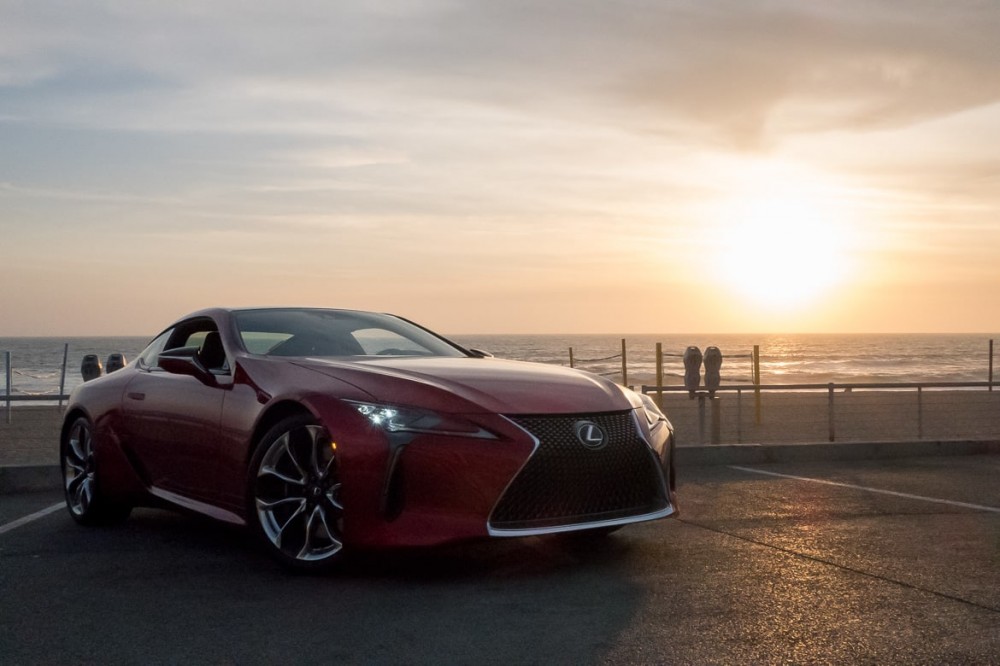
Now look again. I'll wait.
The LC 500 competes against luxury sports/touring cars like the BMW 650i, Mercedes-Benz SL450 and Jaguar F-Type. Compare the LC 500 against those vehicles here.
Pricing for the LC 500 starts at $92,995 (including destination charge). Our test vehicle also had a Performance Package With Carbon and a color head-up display that pushed its sticker price to $103,895.
Stylin' and Profilin'
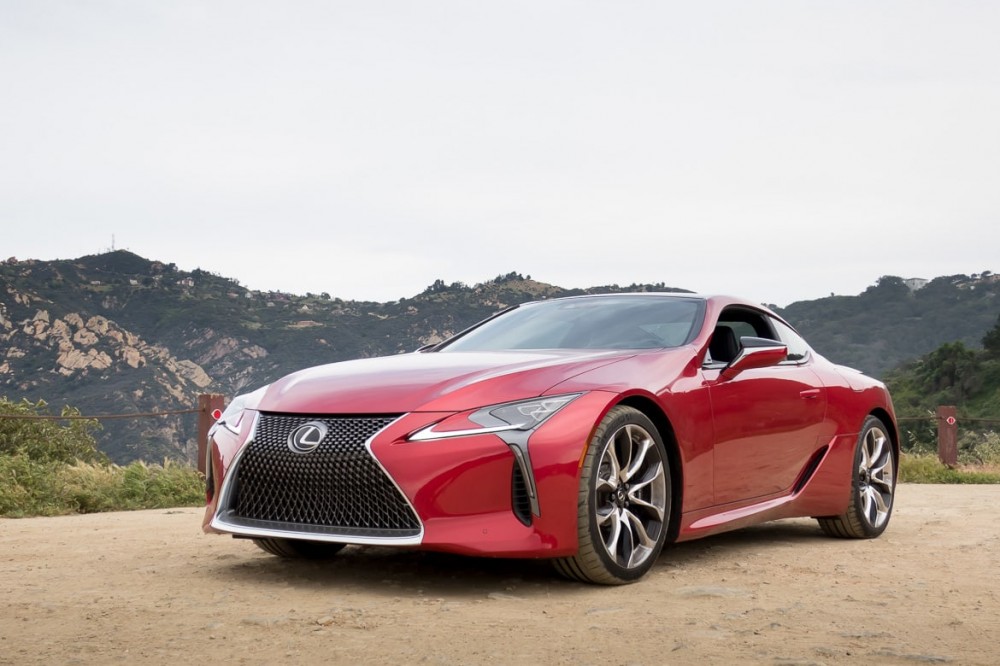
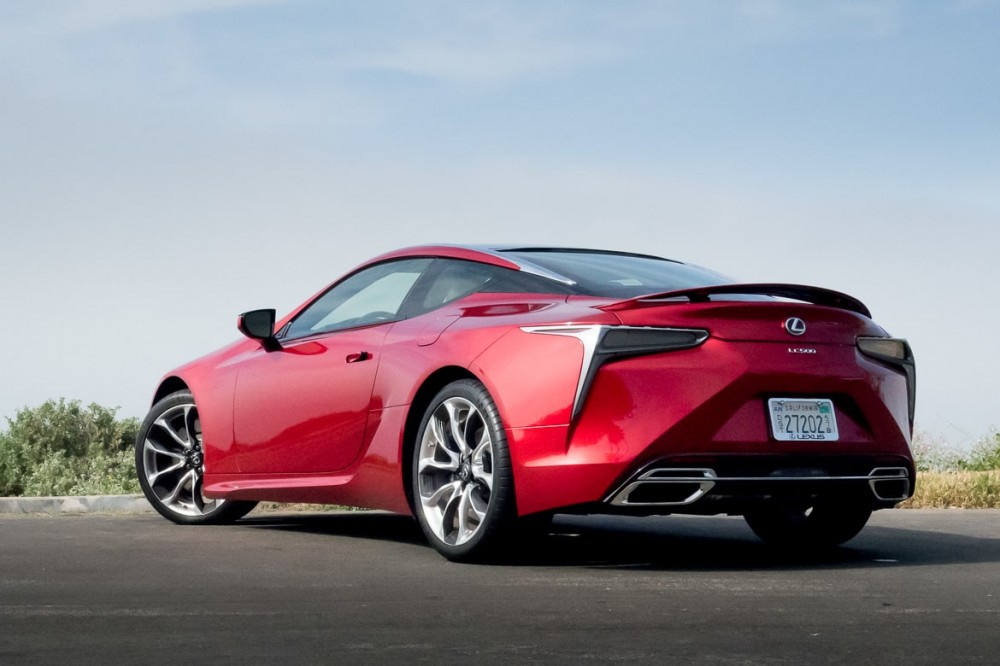
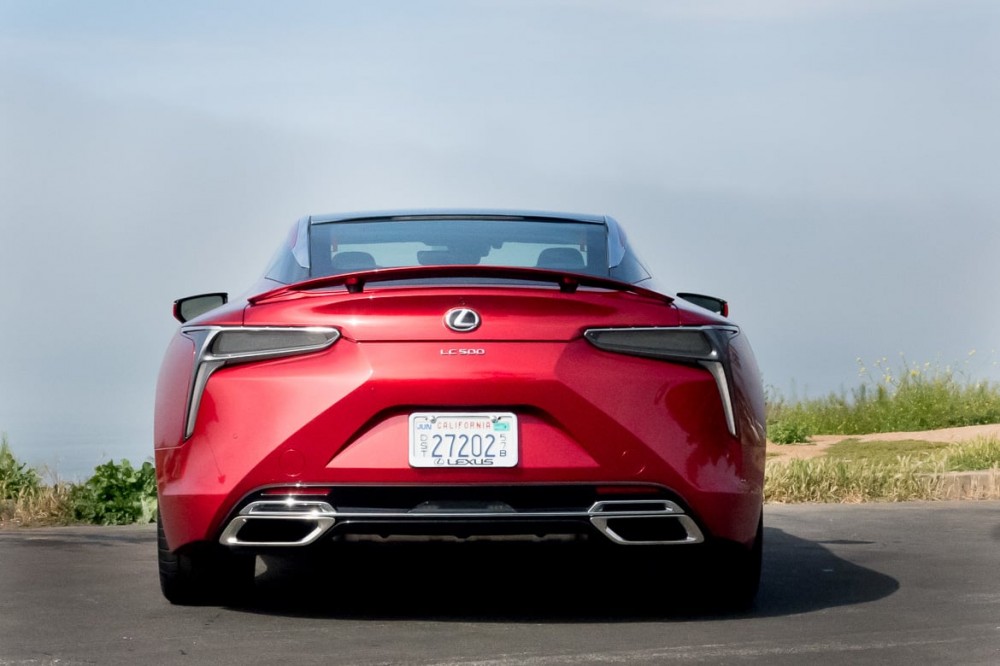
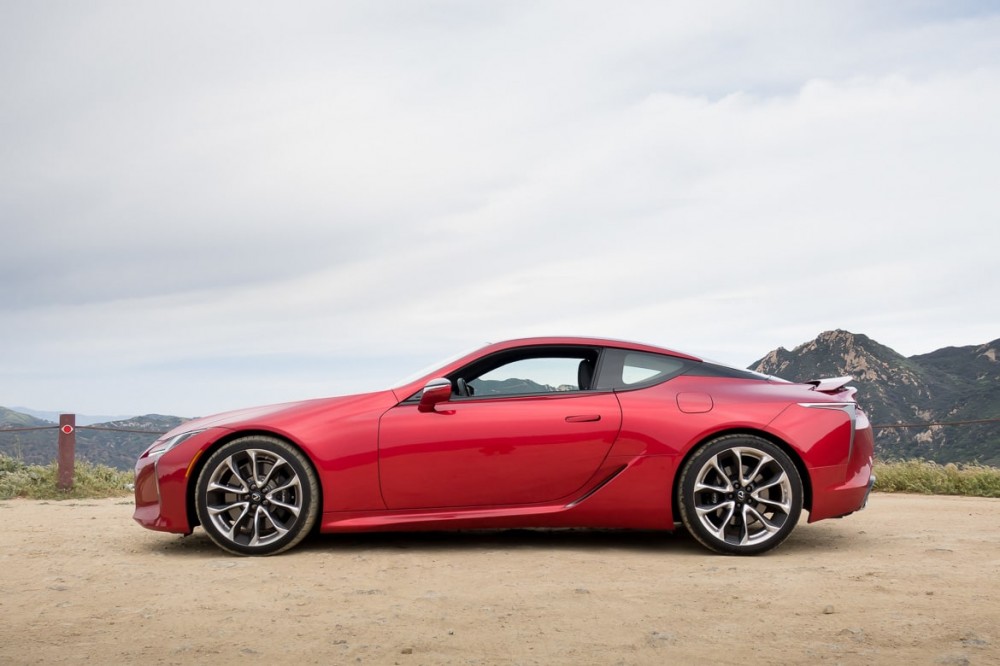
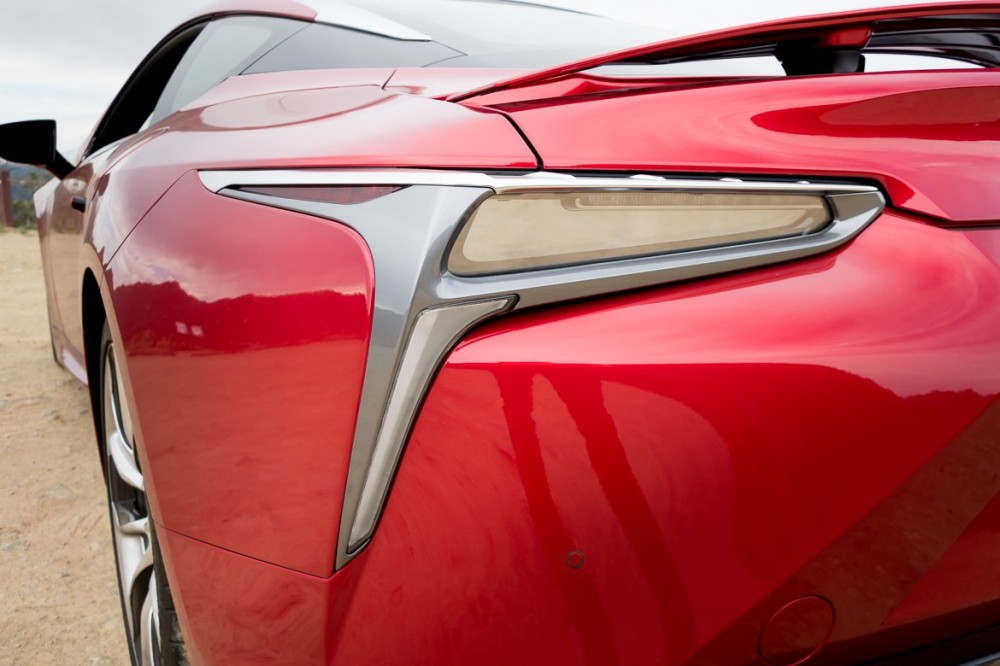
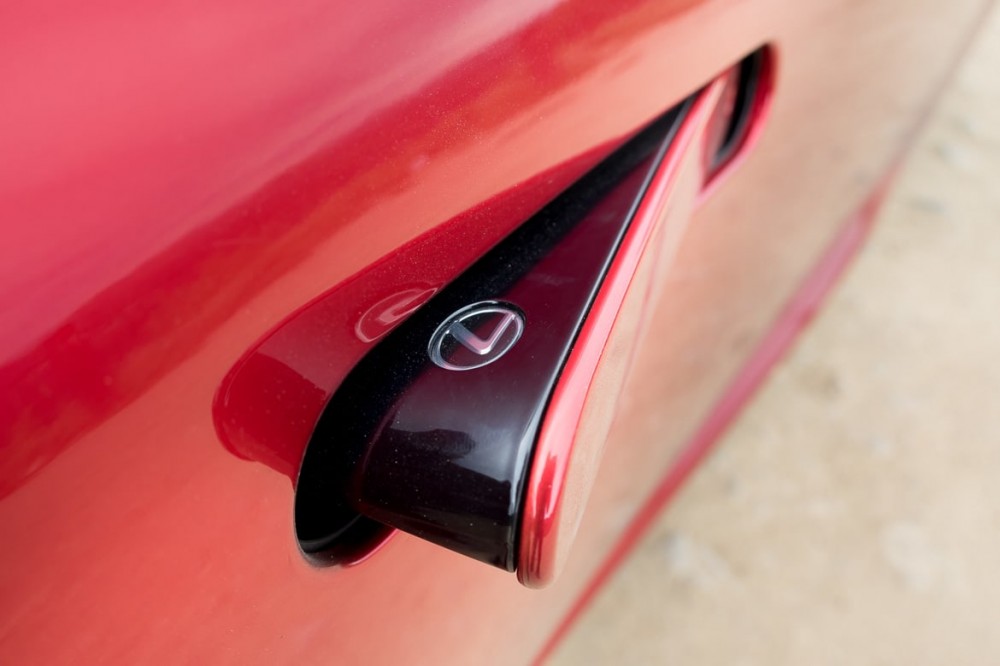
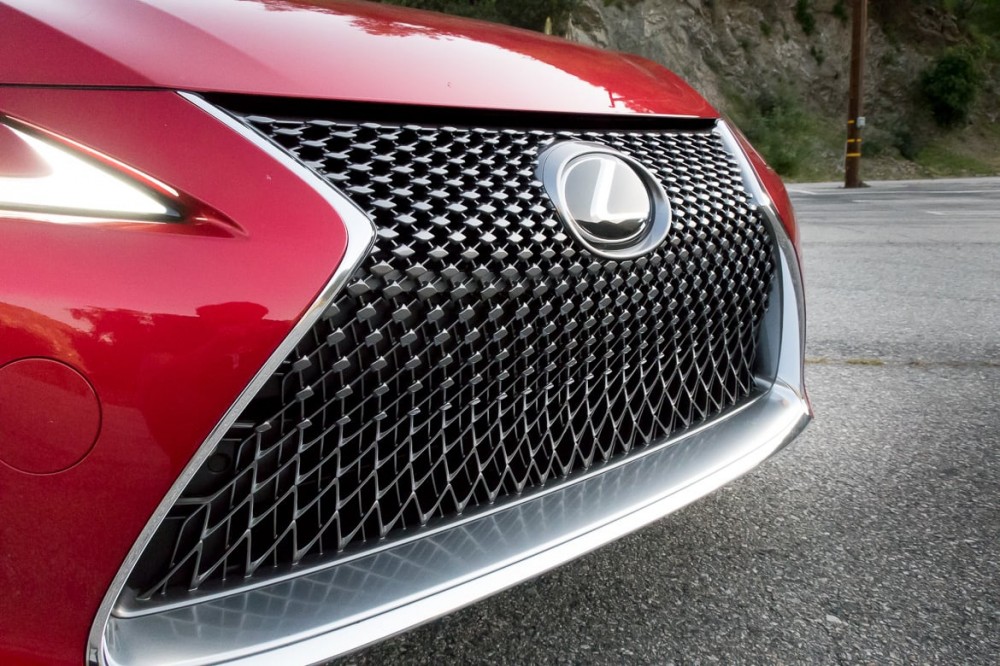
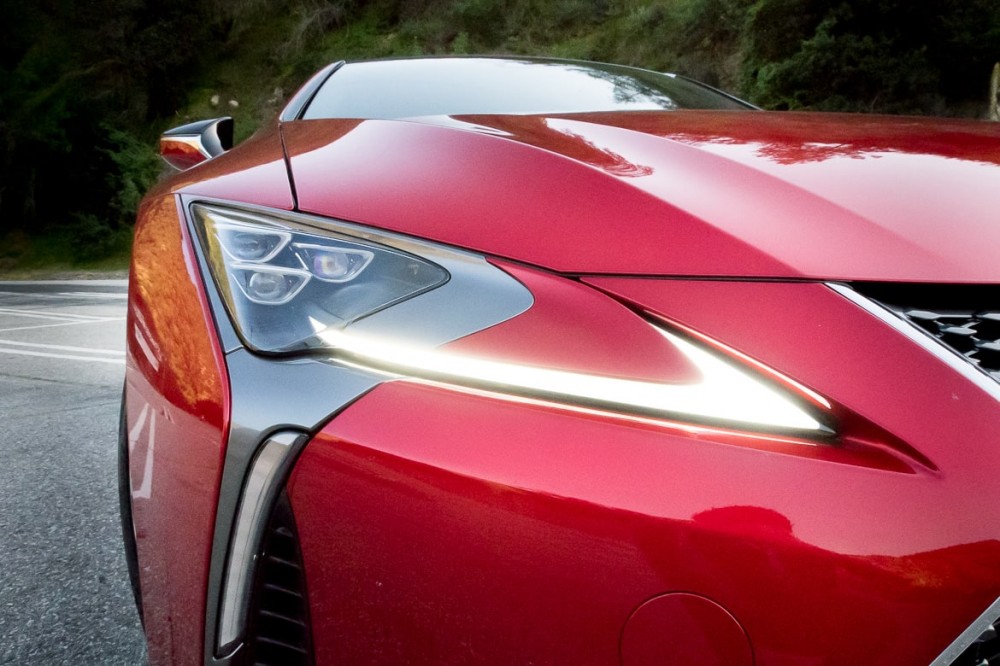
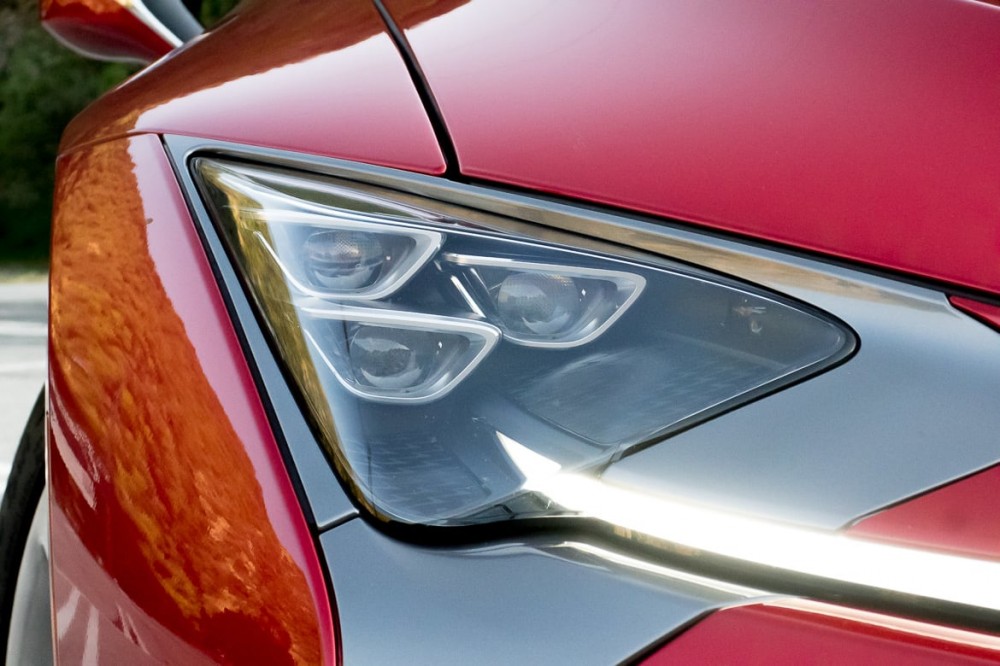
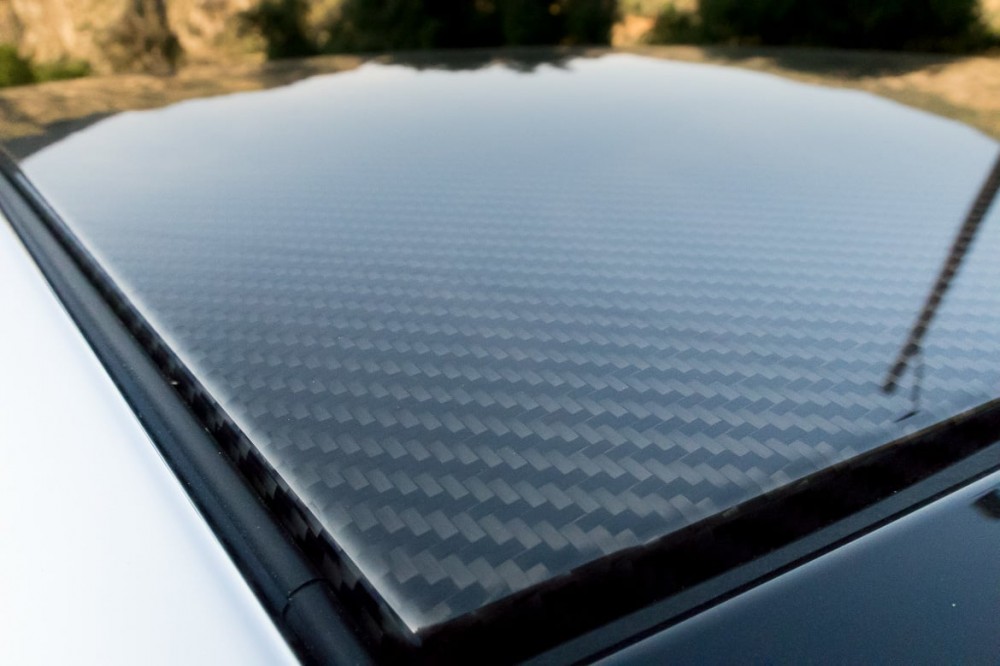
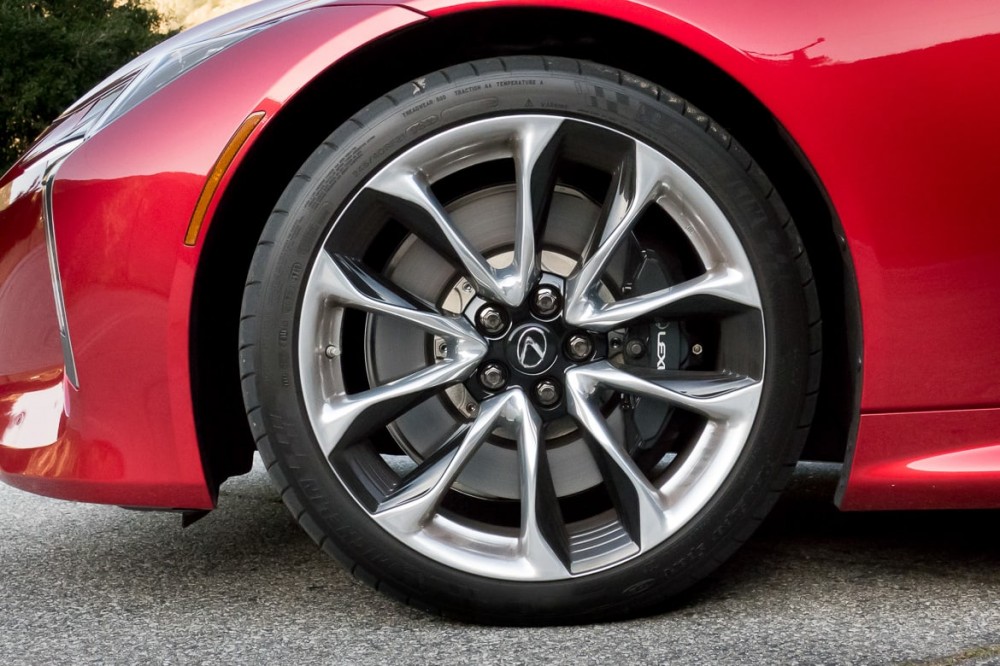
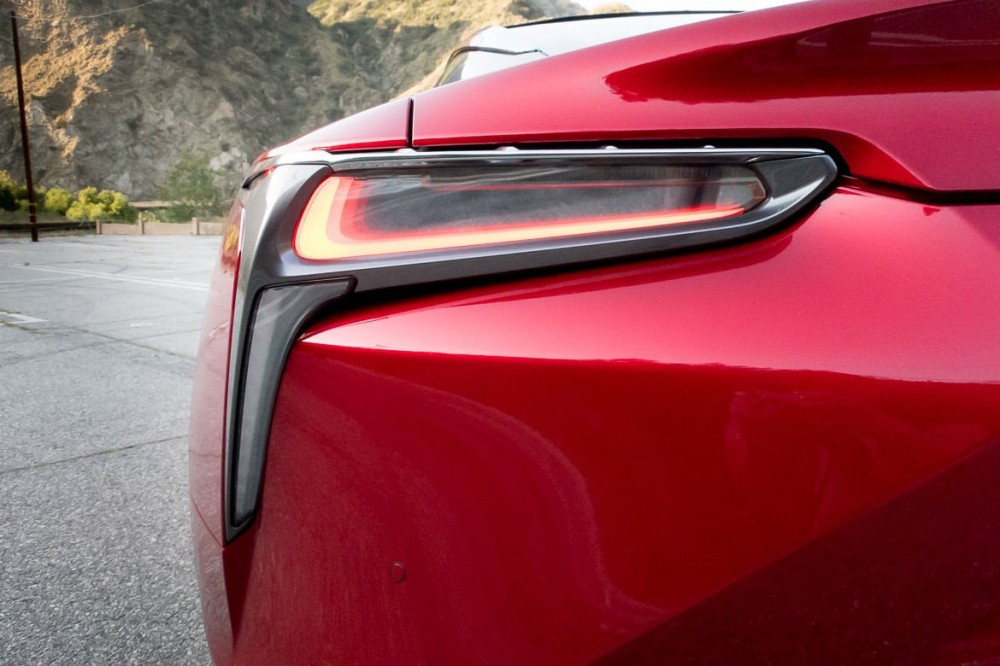
If you don't like being stared at, do not buy this car.
This is the first Lexus in quite some time to evoke real desire (especially in this wonderful red paint that Lexus calls "Infared"), and it seems to have this effect not only on me but on lots of other folks, as well. I was engaged by more onlookers while driving this vehicle than I have been in anything else I've tested. People driving by in everything from hybrids to minivans would lean on the horn as I went by and offer a quick thumbs-up or a few choice expletives to communicate their thoughts.
Lexus' spindle-shaped grilles have inspired both admiration and consternation, and as time has gone by, they've gotten more and more spindly. I don't think the design works with all models, but on the LC 500 it matches the rest of the bonkers styling details perfectly. And if you get up close to the grille, you can see that the mesh widens out the farther you get from the large Lexus logo in the center.
This is the first Lexus in quite some time to evoke real desire in me, and I'm not the only one; it seems to have this effect on lots of folks.
That speaks to the remarkable attention to detail given to every part of the exterior, from those crazy LED projector headlamps to the chrome detailing dripping from the taillights — even the weirdly attractive shape of the side mirrors.
How does the LC 500 drive? That's a bit more complicated.
How It Drives
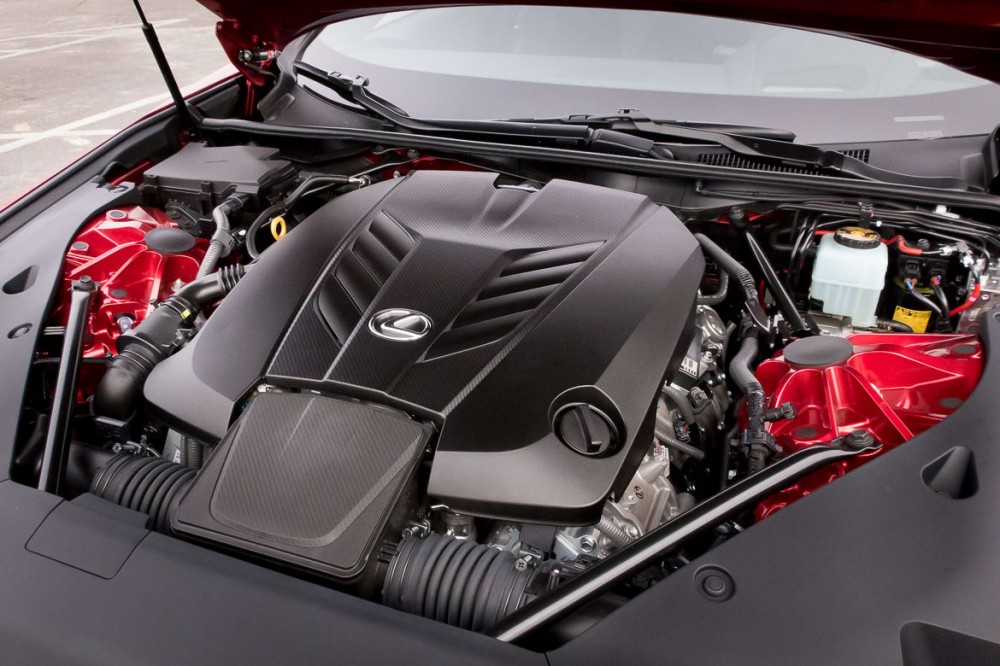
Let's start with what Lexus nailed: the engine and transmission. Instead of going the forced-induction route that so many luxury automakers are taking, Lexus stuck with a naturally aspirated 5.0-liter V-8 that makes 471 horsepower and 398 pounds-feet of torque. It's one of the quicker-revving V-8 engines I've come across, which is helpful because maximum torque doesn't kick in until 4,800 rpm. Power delivery is super smooth, with none of the jumpiness that can result from a turbocharger.
Lexus also did a fantastic job with the engine note. Flip the stalk to the right of the instrument panel to Sport S Plus, and the active exhaust system opens up fully, treating you (and everyone around you, it should be noted) to a delightful roar with an appropriate burble on quick downshifts. Don't want to wake the neighbors? The other drive modes tone down the audio to more reasonable levels.
Before driving the LC, I was a bit wary. I've had some experience with Lexus' eight-speed automatic transmissions in the past, and those have been … frustrating. But the 10-speed automatic (the only transmission available in the LC; sorry manual fans) was surprisingly delightful. It held gears at the right times in regular and aggressive driving, shifted quickly when using the paddles and was responsive to throttle inputs.
Lexus opted not to put an adaptive suspension in the LC 500, opting for a more traditional setup that seems to focus more on comfort than on stiffness — a choice that determines the LC's ultimate destiny as a touring car. It excels at that mission, with plenty of power underfoot and a very comfortable ride. I can't think of another car right now that I'd rather do 300 miles in.
As good as the LC 500 is when pulling in a straight line, it gets similarly lost in corners. Those expecting sharp handling and nimbleness will be disappointed, and this is in part due to the sheer size of the LC: It's a big car. At 187.4 inches long, it's about 10 inches longer than a Chevrolet Corvette (which is big in its own right) and has a pretty substantial curb weight of 4,280 pounds. That's a lot of mass to pull through a corner, and it shows in a good amount of body roll and a tendency to understeer when pushed hard into corners. This car is more at home on straighter roads, where the engine gets to breathe and the suspension isn't as taxed.
Fuel economy ratings are 16/26/19 mpg city/highway/combined on premium gasoline.
Interior and Cargo
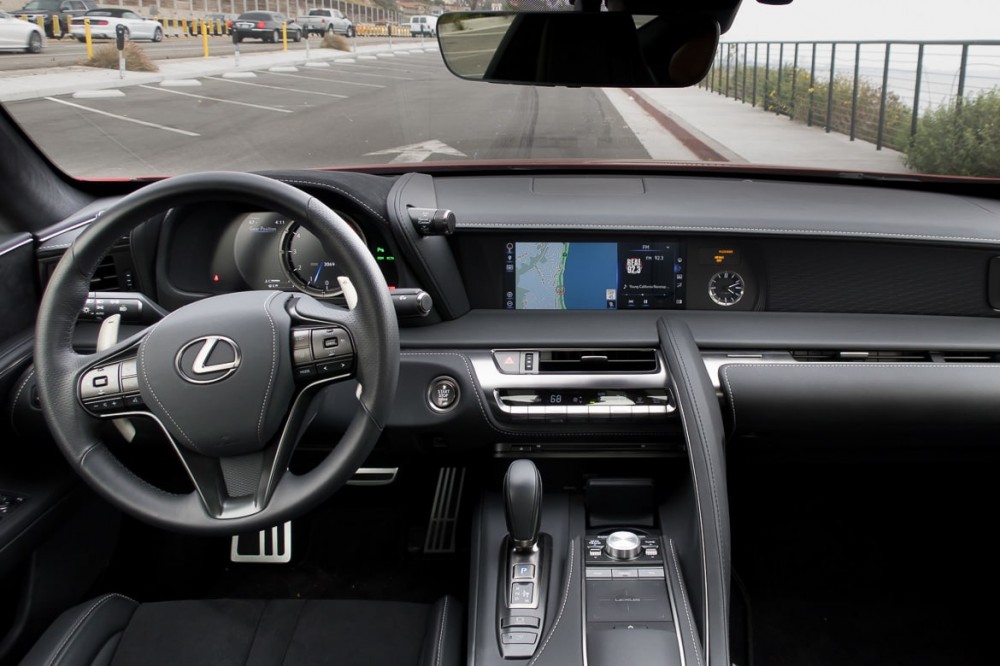
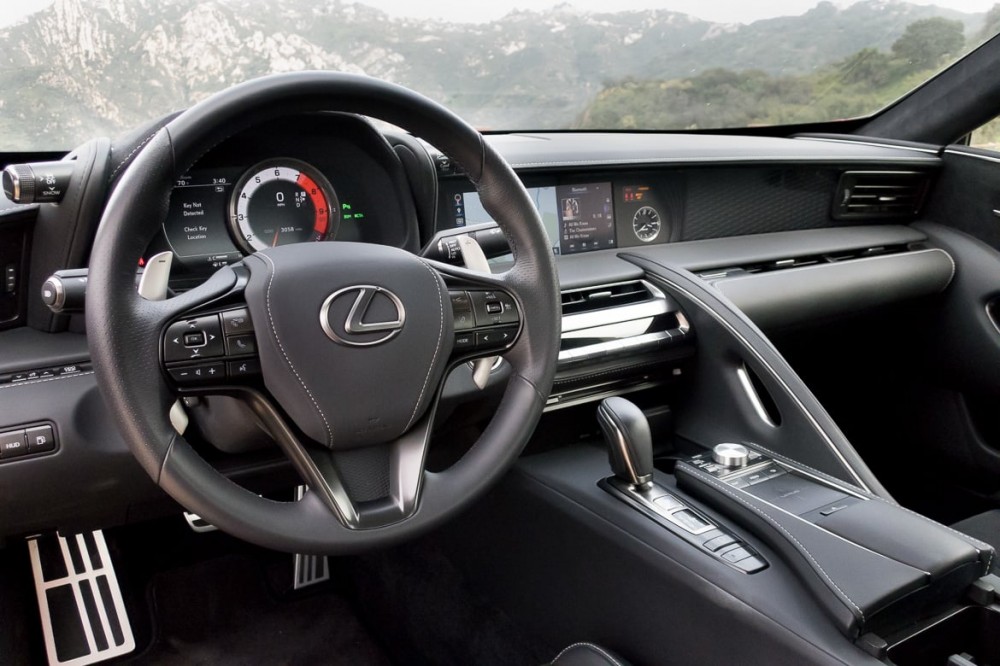
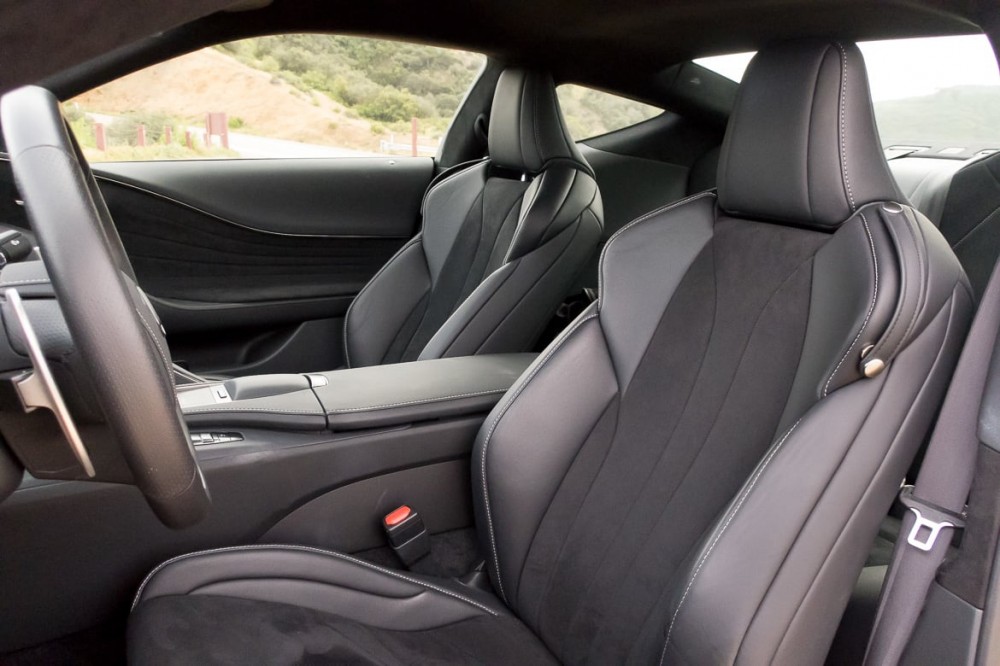
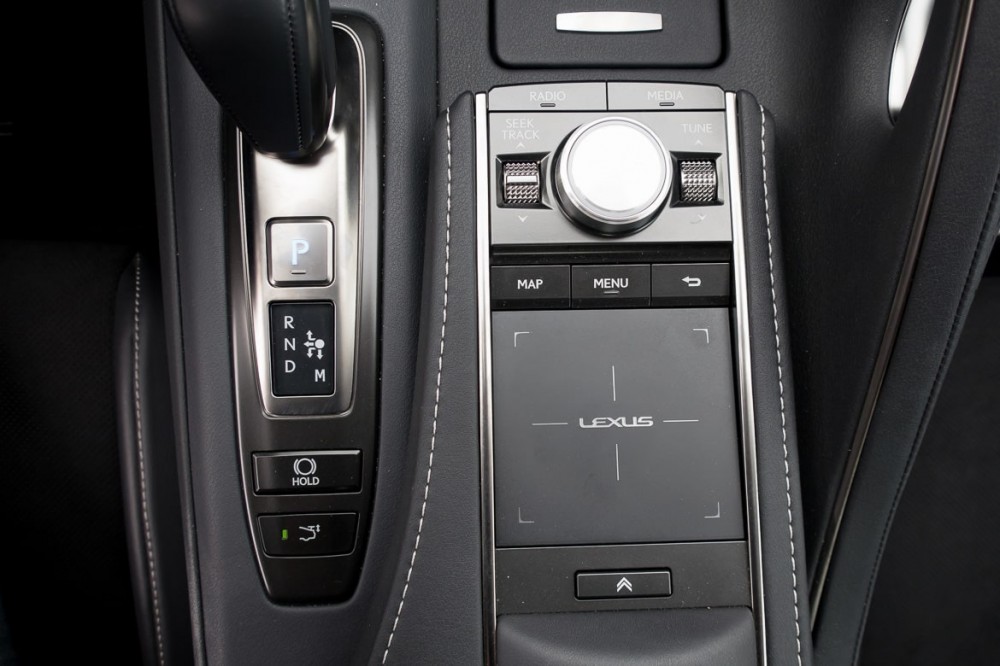
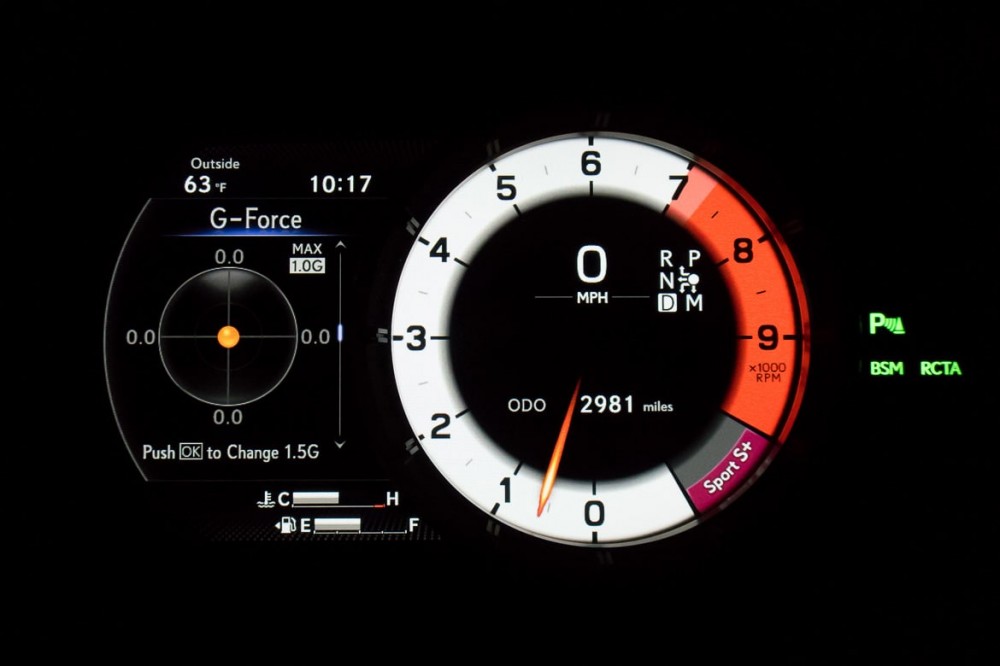
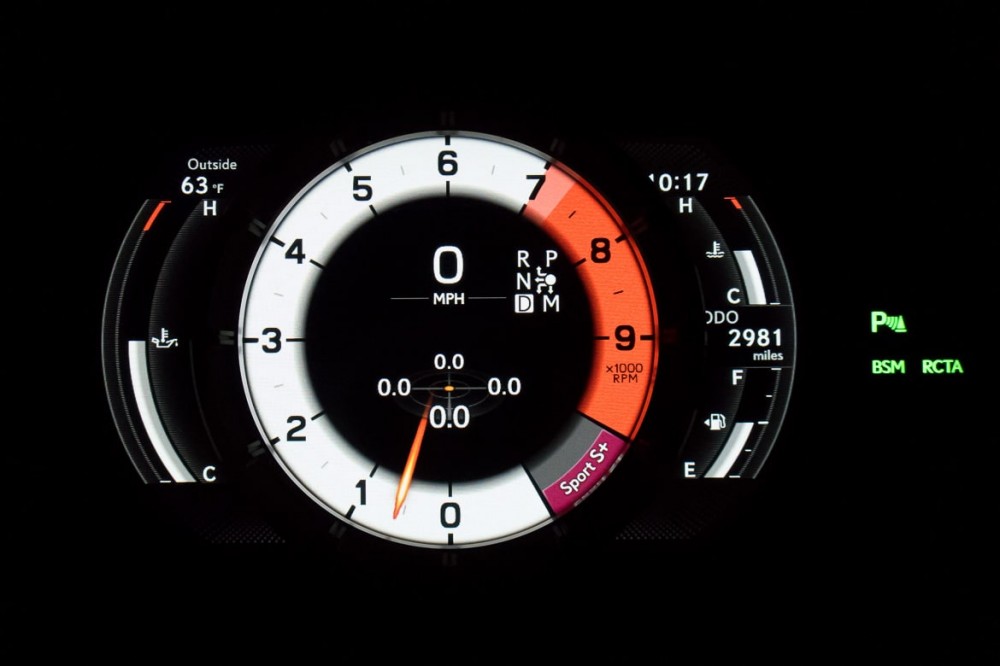
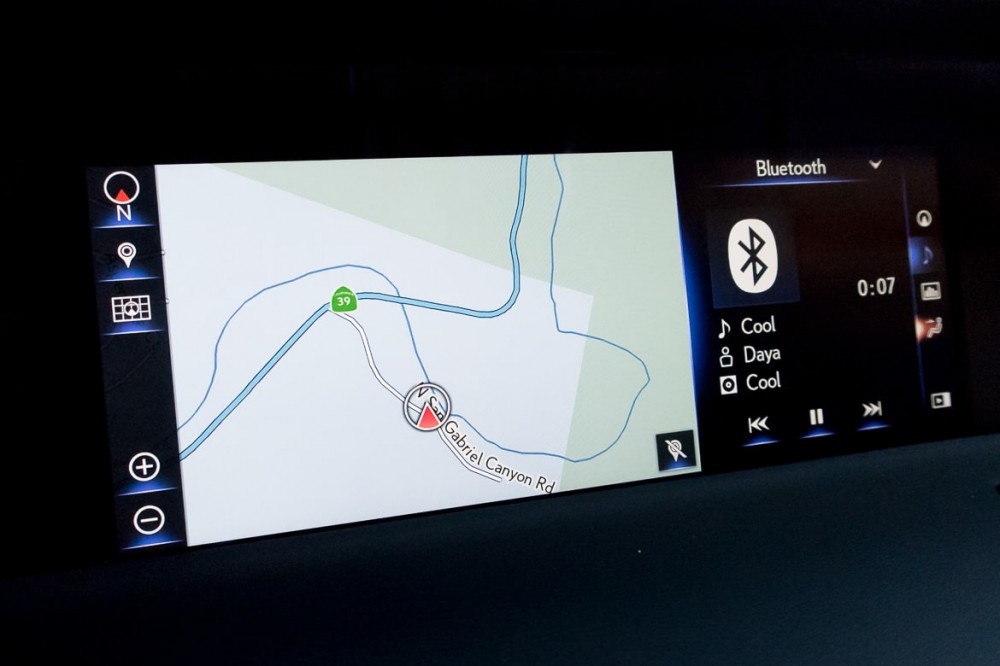
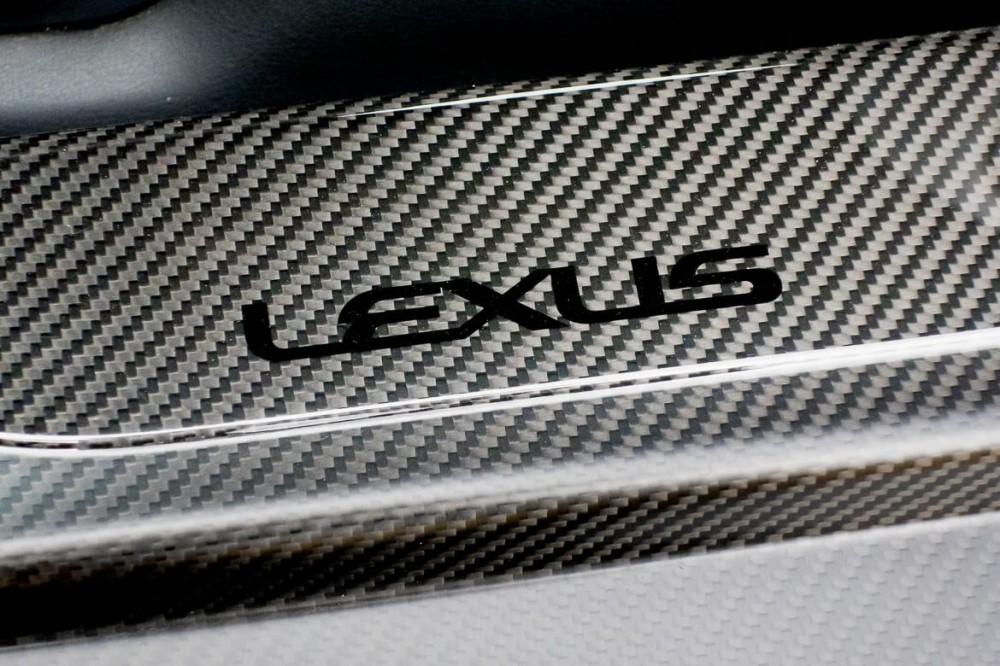
A deft hand when it comes to interior materials and design means the LC 500 more than lives up to its hefty price tag.
One feature reminded me of the Corvette's cockpit: a prominent handle on the center console that gives the passenger something to grab if things go sideways.
The multimedia system has a 10.3-inch widescreen display that sits prominently atop the dash. There's a large touchpad mounted low in the center console, where the driver's right hand rests, that required a large learning curve to use, but I did ultimately find it better than the "mouse"-based system Lexus uses in some of its other vehicles. My biggest issue with it is that it requires you to look at the screen quite a bit to make inputs — more so than some touchscreen-based systems. With the touchpad, I found myself looking at the screen frequently when using it to see which buttons were highlighted and what I was selecting. My instinct was to treat it almost like a mouse cursor on a laptop — fine in that application, but it made me nervous when driving.
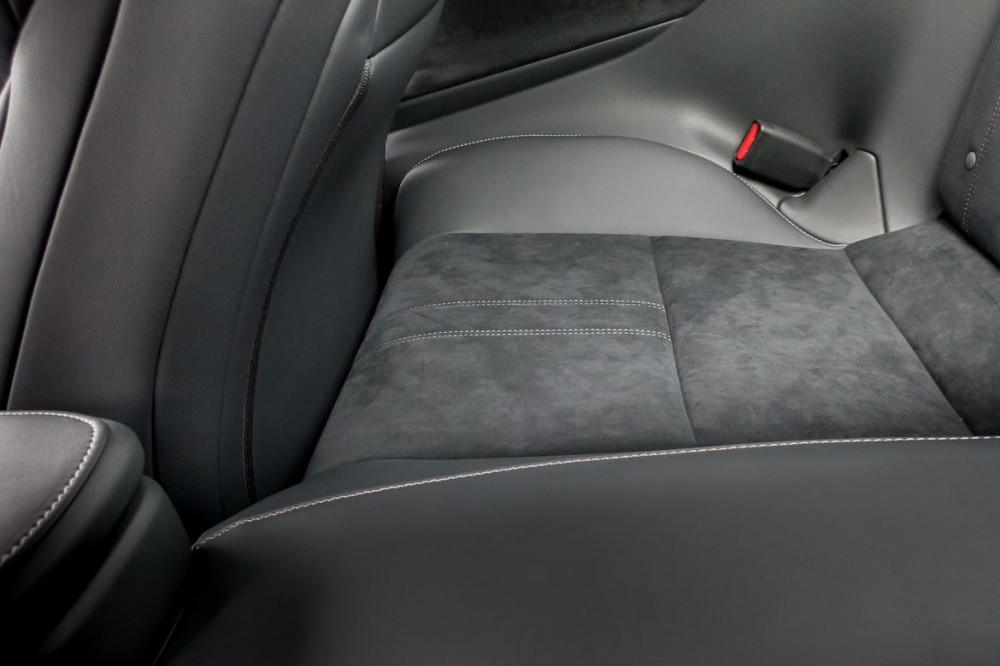
Two rear seats are present, but they don't really do anything — not even a child will fit back there. Cargo room is also at a premium, as the trunk measures only 5.4 cubic feet. I was able to fit one larger piece of luggage in back, but no way could you fit two. That's what the backseat is for, I guess.
Function Follows Form
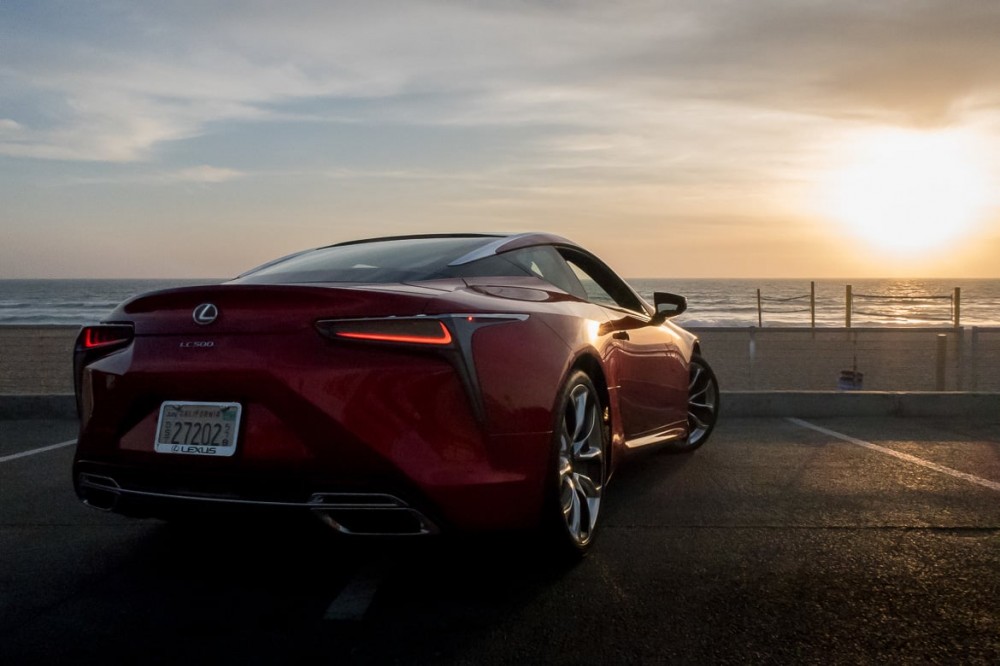
A philosophy of modernist architecture states that the form of a building should follow its function. Structure comes first, then the look and shape of it should bend to fit that function. The LC 500 flips that convention on its head: Everything else about the car — including its literal backseat — takes a backseat to how it looks, and rightfully so. It's art.
Yes, the driving experience is a bit uneven and there isn't much practical space outside the two front seats. Those shortcomings did nag at me from time to time, but then I'd walk up to the LC 500, see it sitting there, and my mind would go blank. Apparently I'm superficial, and this is my ruby-red, V-8 kryptonite.








